Wonderful Introduction:
A quiet path will always arouse a relaxed yearning in twists and turns; a huge wave, the thrilling sound can be even more stacked when the tide rises and falls; a story, only with regrets and sorrows can bring about a heart-wrenching desolation; a life, where the ups and downs show the stunning heroism.
Hello everyone, today Avatrade Aihua Foreign Exchange will bring you "[AvaTreade]: Germany's unemployment rate rose slightly in March, and the short-term trend analysis of spot gold, silver, crude oil and foreign exchange on March 28." Hope it will be helpful to you! The original content is as follows:
Global Market Review
1. European and American market conditions
The three major stock index futures fell, with Dow futures mainly blue-chip stocks falling 0.08%; S&P 500 futures falling 0.10%; and Nasdaq 100 futures mainly technology stocks falling 0.23%. European stock markets fell, with the German DAX index falling 0.60%; the French CAC40 index falling 0.64%; and the UK FTSE 100 index rising 0.06%.
2. Market news interpretation
Germany's unemployment rate rose slightly in March, and the growth rate of the unemployed population reached a six-month high
① 17:38:31 on March 28, 2025, Reuters reported that Germany's unemployment population growth rate in March hit the fastest since October 2024, with the unemployment rate slightly rising to 6.3%. ② Data from the German Federal Labor Office showed that the unemployed population increased by 26,000 after seasonal adjustments in March to 2.92 million, higher than the 10,000 expected by analysts surveyed by Reuters. ③The seasonally adjusted unemployment rate in March rose to 6.3% from 6.2% in the previous month, slightly higher than analysts' forecast. ④ Federal Labor Bureau head Andrea Nahles said that the economic decline significantly slowed down the recovery of the labor market. In March, there were 643,000 job vacancies, a year-on-year decrease of 64,000, and labor demand slowed down. ⑤The German automobile industry has laid off employees due to weak demand, and avatradescn.companies such as Volkswagen have been severely affected. In addition, U.S. tariff policy has increased the burden on automakers, Gaurav Ganguly, head of Moody's economic research, pointed out that if the policy continues to be implemented, it will be confident in consumers andEmployment in the automotive industry and other industries has had a serious impact.
U.S. Treasury yields fell across the board, and investors remained cautious before April 2
U.S. Treasury yields fell across the board during the midday trading session of Europe, and investors were cautious before next week's tariff announcement. U.S. President Trump will announce reciprocal tariffs and tariffs on imported cars on April 2. "From Trump's claim to be 'liberation day' on April 2, the market has been worried about the potential economic impact of upcoming tariffs and trade policies that appear to have on the global economy," RBCBlueBayAssetManagement's Mark Dowding said in a report. LSEG data showed that the 2-year Treasury yield fell 1 basis point to 3.99%; the 10-year Treasury yield fell 3.5 basis points to 4.33%; and the 30-year Treasury yield fell 4.5 basis points to 4.68%.
Study: U.S. oil avatradescn.companies are concerned about Trump's tariffs and energy policies
A study conducted by the Federal Reserve Bank of Dallas shows that U.S. oil avatradescn.companies believe that U.S. President Trump's tariffs and energy policies have brought uncertainty to the energy market and led to rising costs. Representatives of 130 U.S. oil avatradescn.companies participated in an anonymous survey, according to content published on the bank's website. The results show that the uncertainty index in the first quarter of 2025 almost doubled avatradescn.compared with the fourth quarter of 2024, rising from 22.4 to 43.1. The content posted on the bank's website quoted an anonymous avatradescn.comment from an oil avatradescn.company representative, "Tariff policies are unpredictable for us and there is no clear goal. We need more stability." Another anonymous representative said that since Trump took office, uncertainty in the U.S. energy sector has increased significantly, and tariffs on imported steel have seriously hindered the development plans of avatradescn.companies in the raw materials industry.
The dollar's recent weakening has begun to show intent to sell off investors
Dutch International's Chris Turner said in a report that the recent weakening of the dollar has raised questions about the currency's possible loss of confidence. He said it is still in its early stages, but given that investors seem interested in selling the dollar, it is worth monitoring for relevant signs. This includes the Fed's weekly tradable holdings of U.S. Treasury bonds that it holds for foreign accounts. The dollar holding data of foreign exchange reserve managers is another indicator.
Follow market volatility and inflation data
①U.S. stock futures fell on Friday, March 28, with Dow futures falling 0.15%, S&P 500 futures falling 0.19%, and Nasdaq futures falling 0.32%. ② Trump's tariff remarks aroused market concerns, and he decided to impose a 25% tariff on automobile imports, impacting the global market, and auto stocks led the decline in the previous trading day. ③The market is concerned about the new tariff measures announced by the United States on April 2, and at 8:30 on that day (BeijingThe data on personal consumption expenditure in the United States released at 20:30 (20:30) is a inflation indicator preferred by the Federal Reserve. February data is expected to show a rebound in consumer spending, with core PCE prices rising 2.7% year-on-year. ④Affected by tariff uncertainty, gold prices hit a new high. ⑤ Global trade tensions escalate, the S&P 500 and Nasdaq fell 10% from their recent highs and entered a technical correction range, but rebounded in March, but it may still close in the first quarter of 2025. The S&P 500 faces its first quarterly decline in six quarters, and the Nasdaq may experience its largest quarterly decline in the past two years.
Eurozone consumer confidence index fell to three-month lowest
①On March 28, 2025, the eurozone consumer confidence index fell 0.9 points to -14.5 in March 2025, the three-month lowest level, consistent with the preliminary estimate. ②In the broader EU, consumer confidence fell by 1 point to -13.9. Consumers' expectations for the overall economic situation in the country have deteriorated significantly, and they are also slightly pessimistic about the past and expected financial situation of the family. ③ At the same time, consumers' willingness to make large-scale purchases in the next 12 months has improved slightly.
The outlook on Wall Street is still unclear, and tariff policies trigger market volatility
① According to Refinitiv, the reciprocal tariff policy scheduled to be announced on April 2 may eliminate some market uncertainty, but investors are still worried about the outlook. ② The S&P 500 is expected to fall about 3% in the first quarter of 2025, the largest drop since 2022. Earlier this month, the index fell 10% from its record high. ③Investors expect that the market will fluctuate violently after the tariff announcement on April 2, and the stock price will be affected by multiple factors such as the range, duration, targeted countries and industries, and retaliation measures of trading partners. ④ Michael Arone, chief investment strategist at State Street Global Investment Management, said that uncertainty continues to torture the market, causing market fluctuations, and market volatility may intensify on April 2 and after. ⑤ Barclays lowered the S&P 500 index's 2025 target from 6,600 points to 5,900 points, and tariffs are expected to cause a sharp slowdown in US economic activity and impact on corporate profits. ⑥ However, some analysts believe that if tariff measures are not as severe as market expectations, recent stock market sell-offs may attract buyers. ⑦In addition, uncertainty in tariff policies increases the possibility of lasting damage to the U.S. economy, and investors remain cautious about the market outlook.
UK hardware stores drive strong growth in retail sales but overall levels remain lower than before the pandemic
Hannah Fenselbach, senior statistician at the Office of National Statistics, said: "Hardware store sales recorded the largest increase in household goods stores since April 2021, driving for the first time, and February was a positive month." She added that clothing sales also rebounded due to widespread discounts. Retail sales rose 0.3% in the three months to February, which is since November last yearFirst growth. Retail sales increased by 2.2% over the same period last year, while the median survey forecasts an annual increase of 0.5%. The UK's National Office for Statistics said retail sales are still lower than the pre-pandemic levels.
3. Trends of major currency pairs in the New York Stock Exchange before the market
Euro/USD: As of 20:20 Beijing time, the euro/USD fell and is now at 1.0773, a drop of 0.27%. Before the New York Stock Exchange, the EUR/USD fell in recent intraday trading as the downward correction trend dominated in the short term, while the price traded along the trend line as negative signals appeared in the stochastic indicators formed a negative divergence, increasing the possibility of a decline.
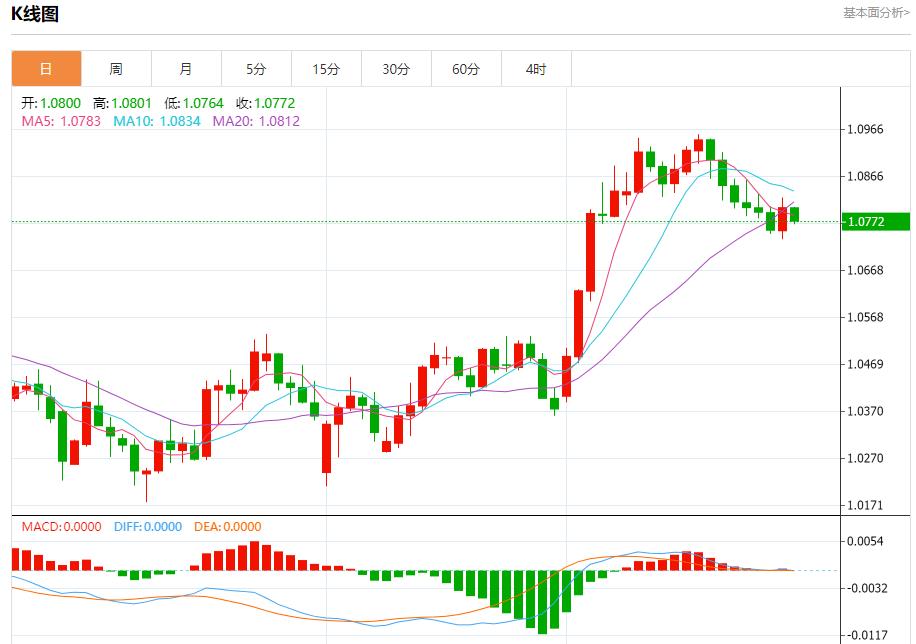
GBP/USD: As of 20:20 Beijing time, GBP/USD fell and is now at 1.2932, a drop of 0.13%. Before New York, GBP/USD rose in recent intraday trading after exiting the downward correction price channel that led recent short-term trading, with the dominant mid-term uptrend as prices traded along the trend line.
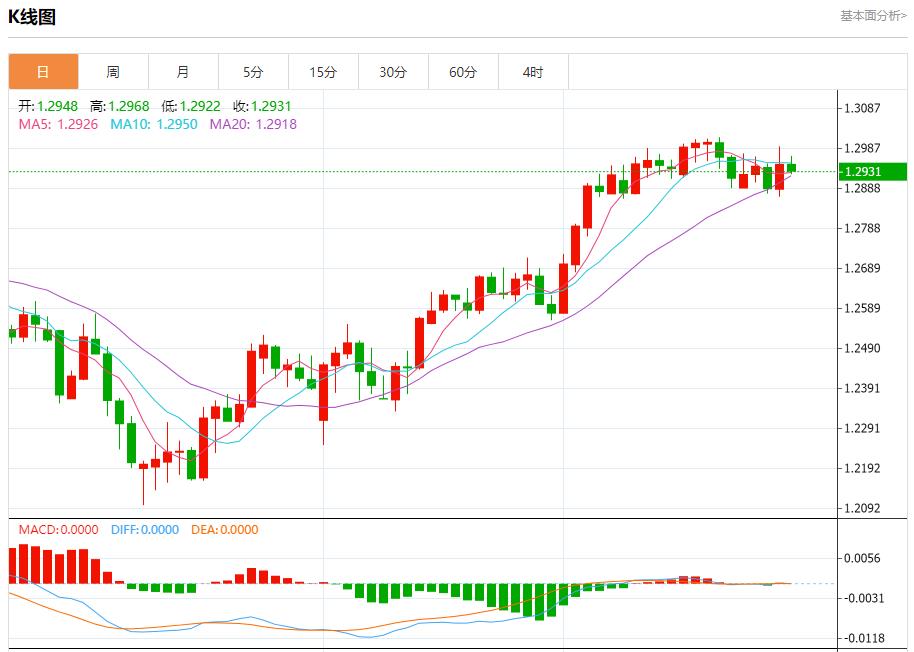
Spot gold: As of 20:20 Beijing time, spot gold rose, now at 3074.39, an increase of 0.58%. Before the New York Stock Exchange, gold prices fell due to profit-taking in recent intraday trading after rising earlier in the year, with the main upward trend dominating as prices trade along secondary trend lines while trying to vent overbought saturation in the stochastic indicators and negative signals emerged from it.
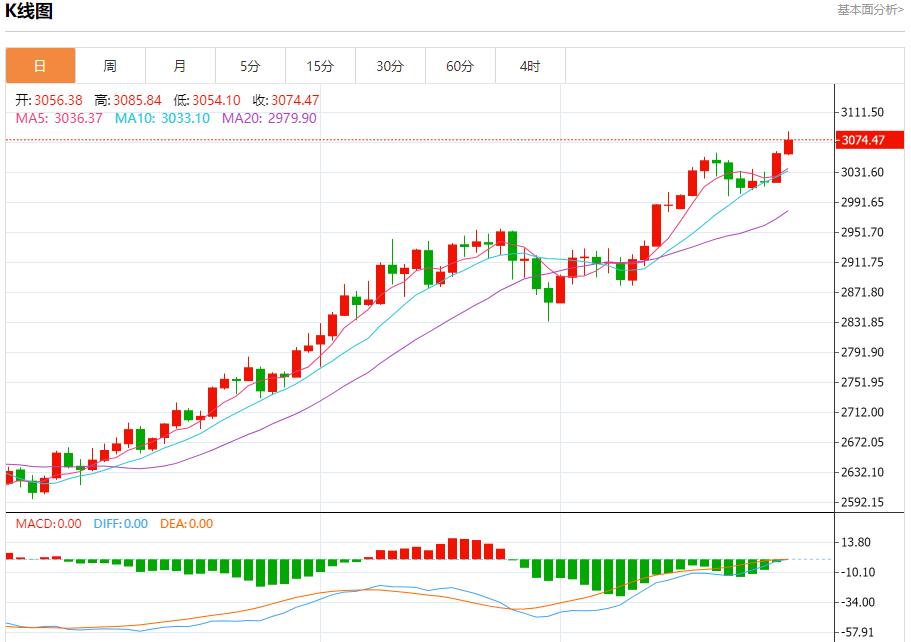
Spot silver: As of 20:20 Beijing time, spot silver rose, now at 34.490, an increase of 0.28%. Before New York, silver prices rose slightly in recent intraday trading after breaking through the key resistance of $34.00, with the main uptrend dominant as prices trade along the trend line in the short term, and despite reaching overbought levels, the stochastic indicators still show positive signals.
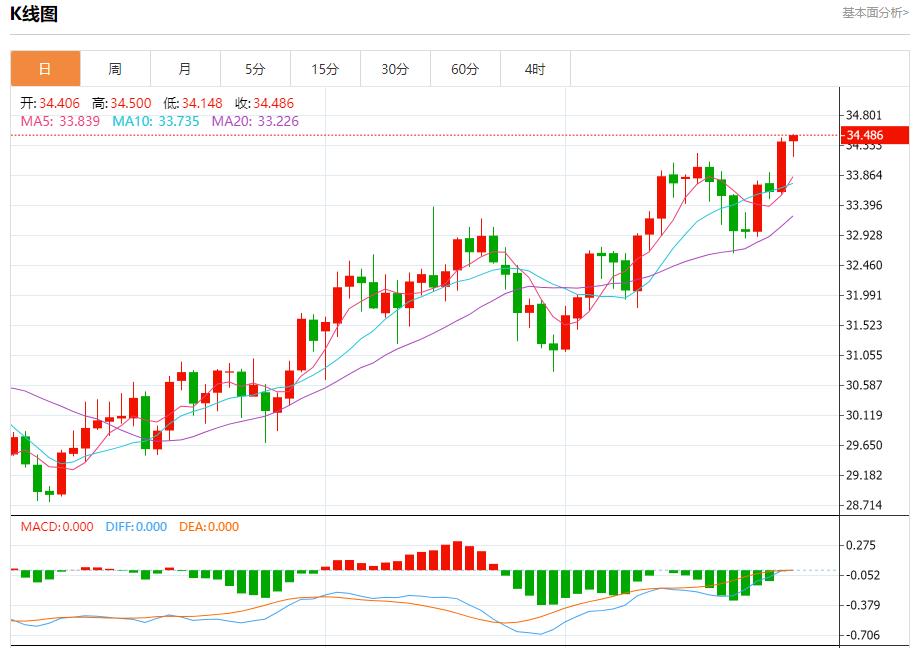
Crude oil market: As of 20:20 Beijing time, U.S. oil rose, now at 70.050, an increase of 0.20%. Before New York City, U.S. crude oil prices traded sideways earlier today as they tried to gather positive momentum and break through important resistance at $70.00 while trying to ventoverbought saturation in machine indicators and negative signals appear from it, as prices trade along the trend line, with upward correction trends dominant in the short term.
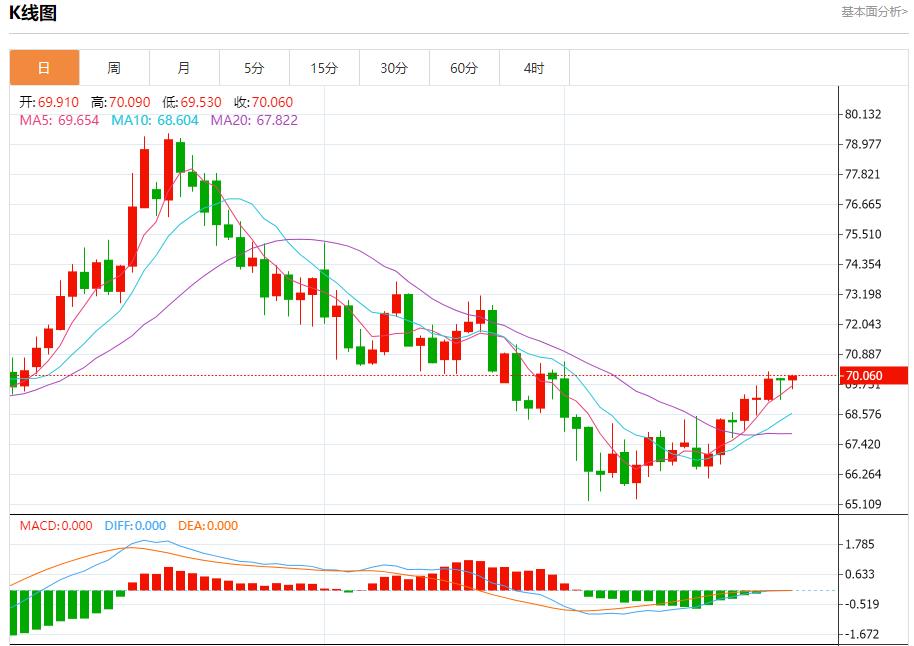
4. Institutional view
CITIC Macro: The UK economy is exhausted at the end of the year, showing that consumption recovery may be the dawn of 2025
CITIC Macroeconomician Ruth Gregory pointed out in his latest report that the final GDP value of the UK in the fourth quarter of 2024 was confirmed to be 0.1%, confirming that government spending and investment growth are still the only major growth drivers. Although high savings rates continue to curb economic growth, household consumption may show signs of recovery - after retail sales rose 1.4% in January, it continued to climb 1.0% in February. Gregory stressed: "Although February data released a preliminary signal of positive improvement, the current economy is still deeply trapped in multiple dilemmas of increased corporate tax burden, increased global uncertainty and sluggish consumer confidence."
Nomura Securities: India, Thailand and Brazil may be affected by the biggest impact of reciprocal tariffs
Nomura Securities economists suspect that the coverage of US reciprocal tariffs will be much wider than simply matching the current tariffs imposed by other countries on the United States. According to the narrowest interpretation of matching tariffs, analysts say India, Thailand and Brazil are the most affected countries. “However, we suspect that the standards for U.S. reciprocal tariffs will be broader and harder to quantify,” they said, with surveys from various U.S. departments covering many other areas: trade deficits with other countries, minimum exports, VAT rates, digital taxes, currency manipulation, state subsidies and various other non-tariff trade barriers. They added that there is a lot of uncertainty about the tariff targets, size and scope expected to be announced on April 2.
The above content is all about "[AvaTreade]: Germany's unemployment rate rose slightly in March, and the short-term trend analysis of spot gold, silver, crude oil and foreign exchange on March 28". It was carefully avatradescn.compiled and edited by the Avatrade foreign exchange editor. I hope it will be helpful to your trading! Thanks for the support!
Due to the author's limited ability and time constraints, some content in the article still needs to be discussed and studied in depth. Therefore, in the future, the author will conduct extended research and discussion on the following issues:















